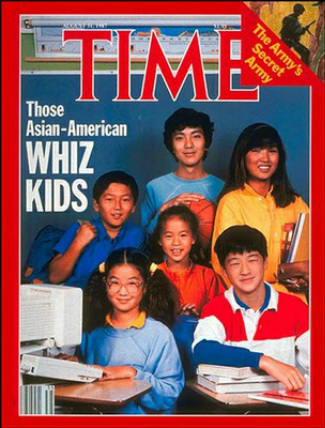 The model minority stereotype hurts Asian-Americans. The model minority stereotype hurts Asian-Americans. Tags: biology, culture, education, immigration/citizenship, race/ethnicity, asian-americans, model minority, stereotype, 00 to 05 mins Year: 2007 Length: 5:40 Access: YouTube Summary: Because Asian-Americans are often better off educationally and economically than whites and other minorities, many people believe in the racial stereotype that Asian-Americans are the model minority. This stereotype argues that Asians are naturally smarter or always fare better because of their strong “family values” and work ethic, with some arguing they are a “superminority” and have been “outwhiting the whites.” This CNN news clips analyzes and critiques the model minority stereotype. The video accurately notes there are no biological or genetic differences between Asians and any other so-called race (see video on race as a social construction). It cites psychological research from Hazel Markus (featured in the video) documenting how racial/cultural identity does shape some Asian-Americans' educational performance. The video further adds that the Asian-American classification is comprised of individuals from more than 12 countries, and that not all Asian immigrants or Asian-Americans performed equally well in education or economic success (a distinction that the stereotype ignores). However, the video fails to note the recent changes in Asian immigration that also affect educational and economic differences between Asians, whites, and other racial minorities. Specifically, many early Asian immigrants came to the US with relatively higher levels of education, English language skills, and occupational skills. More recent Asian immigrants tend to have less educational and economic resources, which again, is overlooked by the racial stereotype. Viewers are encouraged to consider: how does this seemingly positive racial stereotype actually hurt Asians (and other minorities)? As noted in this video interview with an Asian-American advocate, the stereotype prevents resources from being directed into the Asian-American community because "people are not aware of the critical needs" that exist. It also hurts other racial minorities (e.g., African-Americans) because the stereotype gets used to legitimate the opportunities of racial minorities in the US and to argue against the need for resources distributed to those communities. Submitted By: Paul Dean
3 Comments
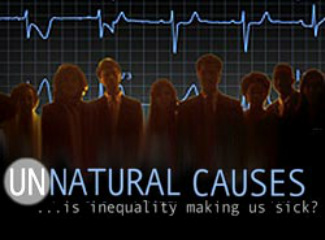 Series explores racial & socioeconomic inequalities in health. Series explores racial & socioeconomic inequalities in health. Tags: biology, class, health/medicine, inequality, race/ethnicity, health insurance, subtitles/CC, 21 to 60 mins Year: 2008 Length: 57:30 (episode one; series trailer here) Access: no online access Summary: The seven-part documentary series, UNNATURAL CAUSES, "crisscrosses the nation uncovering startling new findings that suggest there is much more to our health than bad habits, health care, or unlucky genes. The social circumstances in which we are born, live, and work can actually get under our skin and disrupt our physiology as much as germs and viruses. Among the clues: It's not CEOs dropping dead from heart attacks, but their subordinates * Poor smokers are at higher risk of disease than rich smokers * Recent Latino immigrants, though typically poorer, enjoy better health than the average American. But the longer they're here, the worse their health becomes. Furthermore, research has revealed a gradient to health. At each step down the class pyramid, people tend to be sicker and die sooner. Poor Americans die on average almost six years sooner than the rich. No surprise. But even middle class Americans die two years sooner than the rich. And at each step on that pyramid, African Americans, on average, fare worse than their white counterparts. In many cases, so do other peoples of color. But why? How can class and racism disrupt our physiology? Through what channels might inequities in housing, wealthy, jobs, and education, along with a lack of power and control over one's life, translate into bad health? What is it about our poor neighborhoods, especially neglected neighborhoods of color, that is so deadly? How are the behavioral choices we make (such as diet and exercise) constrained by the choices we have? Evidence suggests that more equitable social policies, secure living-wage jobs, affordable housing, racial justice, good schools, community empowerment, and family supports are health issues just as critical as diet, tobacco use, and exercise. As a society, we have a choice: invest in the conditions for health now, or pay to repair our bodies later." (This excerpt is from the film's website; additional educational materials can be found here.) Submitted By: Jimena Alvarado 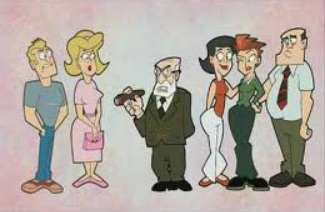 Tags: biology, lgbtq, psychology/social psychology, sex/sexuality, birth order, ex-gay ministry, nurture vs. nature, socialization, sexual orientation, 00 to 05 mins Year: 2007 Length: 4:44 Access: YouTube Summary: Sociologists almost always find strong evidence of nurture over nature in our studies, but there is one research arena where the environment and socialization has little influence: sexual orientation. The lack of nurture’s influence on sexual orientation is explained in this parody of an educational video from the documentary The Bible Tells Me So. The cartoon highlights that while social scientists cannot find links between being gay and socialization factors like parenting styles, biological determinists find strong evidence for their nature arguments that claim sexual orientation depends largely on genes, hormones, and birth order. The video also highlights how the research reflects our patriarchy by focusing almost exclusively on gay men and not lesbians. Unfortunately, this biology-based video does equate male homosexuality to “feminization,” whereas sociologists know cultural constructions of femininity have little to do with sexual orientation and everything to do with stereotypes of gay men. Notwithstanding, the core message of this video is still very sociological because it outlines that since sexual orientation is neither an outcome of socialization or a lifestyle choice, “reparative” or “conversion” therapy is not only ineffective, but can actually become a damaging socialization experience itself. Submitted By: Jason T. Eastman 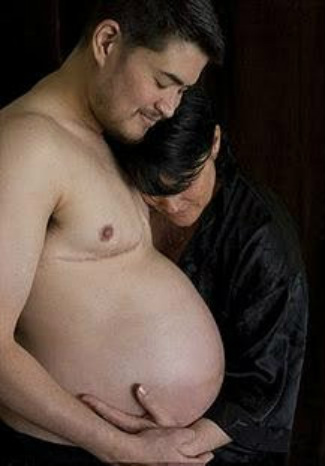 Tags: abortion/reproduction, aging/life course, biology, bodies, gender, health/medicine, lgbtq, marriage/family, science/technology, sex/sexuality, social construction, fatherhood, motherhood, parenting, pregnancy, stigma, transgender, subtitles/CC, 06 to 10 mins Year: 2012 Length: 10:33 Access: Vimeo Summary: This video portrays the experiences and voices of various transgender parents and their families, which includes their decisions to become parents, reflections on what it means to be a parent, experiences of being a child of a transgender parent, the social stigma attached to being a transgender parent (and transgenderism in general), and experiences with various reproductive technology options. The video is excellent for illustrating the diversity of family structures and alternative gender arrangements, and would be useful in a class on sociology of the family, reproduction, gender, or sex and sexuality. People in the video highlight the hyper-gendered experience of pregnancy and parenting, thereby illustrating the social construction of these core features of the life course; this social constructivist perspective stands in contrast to common biological understandings of pregnancy and parenting. This video would pair well with Laura Mamo's Queering Reproduction: Achieving Pregnancy in the Age of Technoscience, as well as with GLAD's recently released book, Transgender Family Law: A Guide to Effective Advocacy, which can offer a nice framework for discussing some of the legal issues and advocacy strategies that transgender people encounter in a family law context. The video is also available with Spanish subtitles. Submitted By: Valerie Chepp Image by Kristian Dowling/Getty Images for Beatie  Tags: biology, health/medicine, inequality, knowledge, prejudice/discrimination, race/ethnicity, science/technology, social construction, theory, fallacy of reification, racial formation, racial project, scientific racism, slave hypothesis, 00 to 05 mins Year: 2011 Length: 2:36 Access: YouTube Summary: When discussing racial inequality in my introductory sociology course I make it a point to cover Omi and Winant's notion of a racial formation as resulting from historically situated racial projects wherein "racial categories are created, inhabited, transformed, and destroyed" (p. 55-56). These projects take multiple forms but in at least one version, there is an attempt to collapse race—a socially constructed concept—into biology. Such projects are similar insofar as they suggest that the socially constructed distinctiveness between people of different racial categories roughly approximates a meaningful biological distinctiveness. Scientists have been centrally involved in this effort to "find" a biological basis for race. Thus in the middle of the 19th century Dr. Samuel Morton attempted to establish that on average cranial capacities of different races were measurably different. While the cranium is no longer scrutinized in this way, the search for a biological, and therefore "natural," basis for race continues. In 1988 Dr. Clarence Grim put forth what is now known as the "slave hypothesis," which is the idea that the enslaved people who survived the Middle Passage were more likely to be carriers of a gene that allowed them to retain salt. Grim argued that this ability to retain salt, while necessary for surviving the harsh conditions on slave ships, is now proving to be the leading cause for higher rates of hypertension among African Americans. This theory has been soundly refuted but apparently still remains in many hypertension textbooks, and in 2007, the medical celebrity, Dr. Oz, promoted the idea to an audience of about 8 million people on the Oprah Winfrey Show. The clip above is from January of this year and is yet another instance of him promoting the theory. Coupled with the recent introduction of BiDil as an FDA approved treatment of heart failure for African Americans, sociologists have taken note of this slipperiest of slides down the slope of "deploying racial categories as if they were immutable in nature and society" (see Troy Duster's article in Science). The clip offers an excellent opportunity for students to discuss the persistence of this racial project, the involvement of science in this project, and how these ideological articulations might serve to provide a justification for continued inequality. Submitted By: Lester Andrist 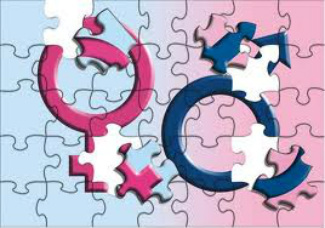 Tags: biology, bodies, children/youth, gender, lgbtq, sex/sexuality, clitorectomy, intersex, intersexuality, medical sociology, transgender, 11 to 20 mins Year: 2000 Length: 12:50 Access: YouTube; www.isna.org Summary: The promotional synopsis for this film notes that, "Clitorectomy and other forms of sexually mutilating genital surgery are a reality here and now for children born with a clitoris that doctors or parents think is 'too big.' In this short documentary, Kristi Bruce and Howard Devore, both born intersex, talk eloquently and straightforwardly about their experience of a medical model based upon shame, secrecy, and forced 'normalization. Physician Jorge Daaboul joins their call for an end to secrecy and mutilating genital surgery on intersex children." This film is incredibly informative and concise and would be a nice way of beginning a discussion about intersex identities. The clip might also serve as a means of beginning a discussion about how the rigid gender binary in the United States and elsewhere leads to physically and emotionally harmful institutionalized practices which affect a sizable population. Note that two other clips on The Sociological Cinema (here and here) explore the topic of intersexuality as it pertains to South African runner, Caster Semenya, and the media attention she received after her "true" sex was called into question in 2009. Submitted By: Lester Andrist 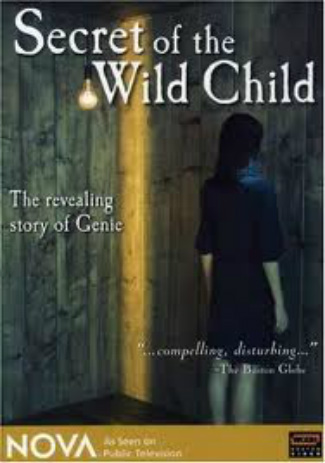 Tags: biology, discourse/language, nature vs. nurture, symbolic interactionism, socialization, ethics, 21 to 60 mins Year: 1994 Length: 56:00 Access: YouTube (part 1; part 2; part 3; part 4; part 5; part 6) Summary: Film describes the story of a young girl named 'Genie' who suffered extreme social isolation during the first decade of her life while she was strapped to a potty chair. Rescued by authorities, the film focuses on her subsequent treatment by psychologists and health experts and her resulting advancement in linguistic development. The film highlights the importance of social interaction in the acquisition and development of language - a key principle of symbolic interactionism. Other themes include the role of ethics in social research and the 'nature versus nurture' debate in the social sciences. PBS also hosts this site with classroom activities and ideas for teachers using this film. Submitted By: Christopher K. Andrews 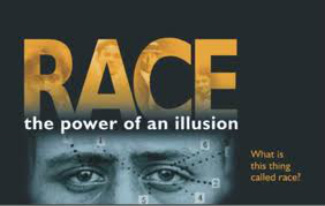 Tags: biology, inequality, prejudice/discrimination, race/ethnicity, social construction, 21 to 60 mins Year: 2003 Length: 21:43 (total for 3 clips) Access: YouTube (clip 1; clip 2; clip 3) Summary: These are excerpts from the PBS documentary Race: The Power of an Illusion (3 parts, at 56 minutes each). In this group of videos, clips 1 and 2 (16:13 total) critique the biological foundations of race by drawing upon a variety of scientific experts and DNA evidence (and addressing popular misconceptions). I show these 2 clips and then ask, "If race is not based upon our genes or biology, then what is it based upon?" After some discussion, I show clip 3 (5:31) which discusses race as an "idea constructed by society to further certain political economic goals," linking the emergence of race in the US in justifying slavery. This could be utilized with any introduction to race (in an intro, social problems, inequality, or theory class) and may be paired with Omi and Winant's racial formation theory. Note that most, if not all, clips from the entire documentary are posted on YouTube and can be reconfigured to match your lecture's needs. The documentary's first episode, "The Difference Between Us," is available online here. Submitted By: Paul Dean 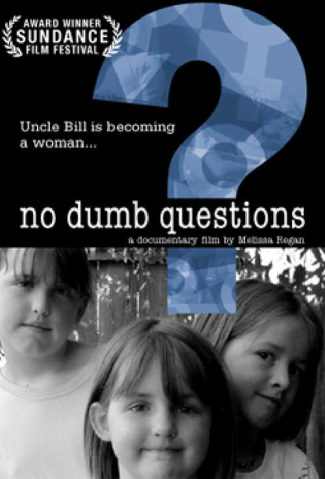 Tags: biology, bodies, children/youth, gender, lgbtq, marriage/family, sex/sexuality, social construction, sex reassignment surgery, socialization, subtitles/CC, 21 to 60 mins Year: 2001 Length: 24:00 Access: no online access Summary: This lighthearted and poignant documentary profiles three sisters, ages 6, 9 and 11, struggling to understand why and how their Uncle Bill is becoming a woman. These girls love their Uncle Bill, but will they feel the same way when he becomes their new Aunt Barbara? With just weeks until Bill's first visit as Barbara, the sisters navigate the complex territories of anatomy, sexuality, personality, gender and fashion. Their reactions are funny, touching, and distinctly different. This film offers a fresh perspective on a complex situation from a family that insists there are no dumb questions (description from the film's website). Submitted By: Valerie Chepp 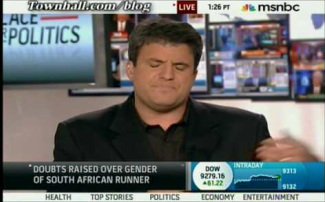 Dave Zirin discusses controversy surrounding Caster Semenya Tags: biology, bodies, foucault, gender, intersectionality, lgbtq, media, prejudice/discrimination, race/ethnicity, sex/sexuality, social construction, sports, caster semenya, norms, 00 to 05 mins Year: 2009 Length: 3:44 Access: YouTube Summary: Interview and commentary with Dave Zirin, sports writer for "The Nation." Zirin discusses the case of South African runner, Caster Semenya, whose gender was called into question after her victory at the 2009 World Championships. This clip is useful for talking about the social construction of sex and gender, and the pervasive discomfort around - indeed "disciplining" of - bodies that do not neatly "fit" into clear sex and gender categories. Submitted By: Valerie Chepp |
Tags
All
.
Got any videos?
Are you finding useful videos for your classes? Do you have good videos you use in your own classes? Please consider submitting your videos here and helping us build our database!
|
 RSS Feed
RSS Feed
